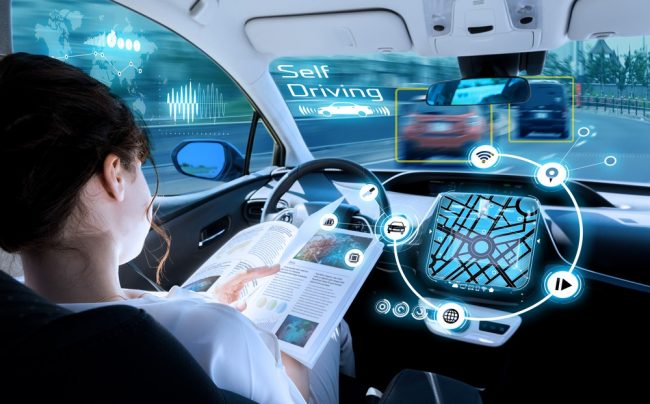 Source: metamorworks/Shutterstock
Source: metamorworks/Shutterstock
With the dawn of a new decade come fresh and exciting technological innovations. But when those developments shake up your industry and potentially threaten your organization's bottom line, the last thing you want to do is put your head in the sand. After all, we all know tech advances are ubiquitous and stop for no one. For credit unions, two recent disruptors are the rising popularity of ridesharing services and self-driving cars, which have the potential to encroach on what has been the industry's bread and butter – car loans. However, these trends also represent an opportunity to credit union executives, who would be wise to implement innovative ways to adapt and scale up operations. This is a smart strategy and one that can keep their institutions successful and thriving for years to come.
Consider the recent changes technology has wrought in the automotive sales and transportation industries in just the past several years. Rideshare companies like Uber and Lyft have taken the world by storm. According to a 2018 Pew Research Center survey, 36% of American adults said they use ride-sharing services, and a whopping 61% said they were aware of the services but hadn't used them. By comparison, in 2015, only 15% of American adults had used ride-sharing services, and 33% were unfamiliar with them. Just imagine how those numbers will increase in the coming years!
Recommended For You
The increase will only be magnified as emerging technology supporting the industry advances. The continuing development and fine-tuning of autonomous cars is poised to be a potential game changer for the rideshare industry. After all, if companies like Uber and Lyft eliminate the need for drivers with the integration of self-driving cars, their services will become cheaper. That means those people who have only heard about the ridesharing option – 61% as of 2018 – may very well be swayed to take them for a spin, so to speak, instead of shopping for an auto loan to purchase a vehicle.
This presents serious challenges for the automobile sales industry – and consequently the auto loan business – which is already dealing with the rising cost of cars, thanks in large part to advanced feature add-ons like high-tech safety features, Bluetooth and navigation systems that have become standard on many new vehicles. Rising loan interest rates, auto import tariffs, and high oil and gas prices have also had an effect.
As a result, fewer cars are being sold and financed, and credit unions have suffered. According to CUNA Mutual's latest trends report, credit unions' new auto loan balances fell 0.7% in October of 2019, compared to the 0.7% gain recorded in October 2018. What's more, new auto loan balances increased only 0.9% during the last year. When looking at trends from year to year, new auto loan balances fell 3.5% in October 2019, down from the 7.2% pace reported in October 2018.
So if the emerging trends are gaining steam, how can credit unions minimize the potential negative impact? Strong partnerships are a good first step. One option is to join forces or revenue share with local auto dealerships that set aside a fleet of vehicles for your city, allowing credit union members to lease a used automobile when they need it or when they want to ride share a driverless car.
However, partnerships alone won't fix the problem. To keep up with transportation industry changes and offset additional losses in the auto loan business, credit union executives need to think seriously about the best ways to adapt their credit unions' auto lending strategies to long-term transportation and auto trends. In other words, they must meet their members and potential members where they are in terms of their specific vehicular needs.
After all, in our hot gig economy where short-term jobs, freelancing and independent contracting are common, it's becoming increasingly easier for people to embrace their entrepreneurial spirit and start their own businesses. For example, people who drive for either Lyft or Uber must meet certain vehicle requirements, such as the age and safety features of their car. If these folks have to buy a new automobile in order to work for or with any of these companies, credit unions have to be there to make it happen.
Of course, credit union executives can't overlook the use of innovative technology, either. It's vital for a credit union to have the best technology available in order to have a competitive advantage over other financial institutions fighting to maintain their auto lending portfolio. Better technology removes the hurdles of obtaining a loan and will drive consumers to your credit union.
Remember, in any industry, being proactive and getting ahead of emerging trends is always a solid way forward. In terms of the transportation industry, ridesharing programs are booming and the gradual integration of self-driving cars can only help them along. Credit unions can make sure they're along for the ride if their leadership can overcome these imminent challenges by turning them into unexpected opportunities.
 Larry Hayes
Larry Hayes Larry Hayes is President of eCU Technology, a CUSO of First Service Credit Union in Houston.
© Touchpoint Markets, All Rights Reserved. Request academic re-use from www.copyright.com. All other uses, submit a request to [email protected]. For more inforrmation visit Asset & Logo Licensing.






